National Class E Scow Association
Class contact information.
Click below
Class Email
Class Website
One-Design Class Type: Dinghy
Was this boat built to be sailed by youth or adults? Both
Approximately how many class members do you have? 300
Photo Credit:Melges Performance Sailboats
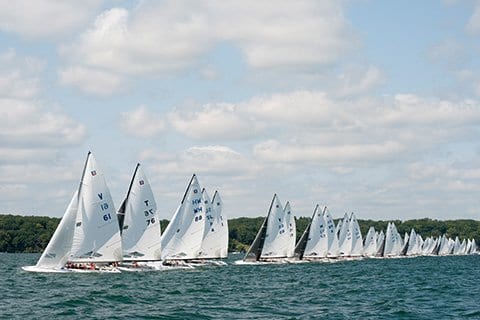
Photo Credit: Hannah Noll
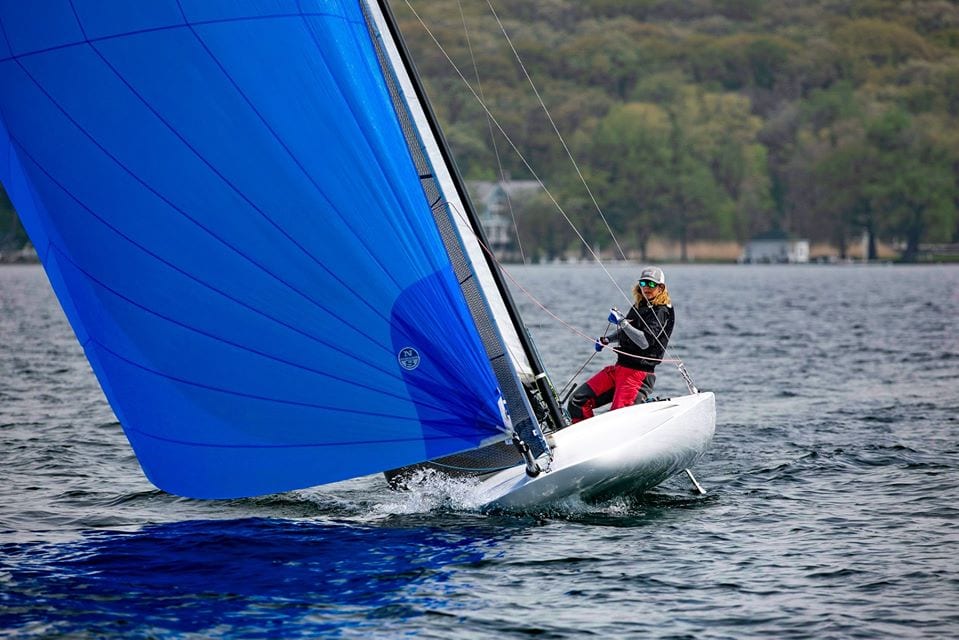
Photo Credit: Melges Performance Sailboats
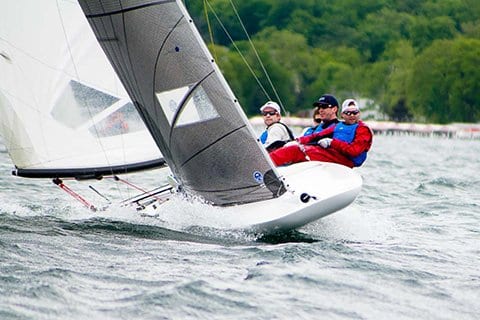

About National Class E Scow Association
The National Class E-Scow Association (NCESA) was founded in 1959 to promote the sport of E-Scow sailing. The object and purpose of this association shall be to encourage and promote amateur yacht racing in Class E Scows; to maintain the Class E Scow as a one-design yacht; to sponsor an Annual National Class E Scow Championship Regatta; to adopt and enforce rules and regulations for the proper governing of races and regattas; to establish and enforce scantling rules and specifications for the control of the design of Class E Scows. We have fleets primarily in the Midwest and East coast along with a few in the south and west.
Boats Produced:
Class boat builder(s):
Melges Performance Sailboats
Approximately how many boats are in the USA/North America? 300
Where is your One-Design class typically sailed in the USA? List regions of the country:
East – New Jersey, New York Midwest – Michigan, Minnesota, Wisconsin, Indiana, Iowa South – Georgia, South Carolina, Texas West – Colorado
Does this class have a spinnaker or gennaker? Yes
How many people sail as a crew including the helm? 3-4
Ideal combined weight of range of crew: 450-650
Boat Designed in 1923
Length (feet/inches): 28′
Beam: 6′ 9″
Weight of rigged boat without sails: 965 lbs
Mast Height:
Tuning Guides
Class rules (pdf doc).
Back to One-Design Central
Copyright ©2018-2024 United States Sailing Association. All rights reserved. US Sailing is a 501(c)3 organization. Website designed & developed by Design Principles, Inc. -->
- Print This Page
- Text Size
- Scroll To Top
- Regatta/Event Calendar
- Regatta NOR/Results
- National Rankings
- 2024 E National Champs
- Past Championship Results
- NCESA Regatta Bid Info
- Tuning Guides
- Photo Albums
- Social Media Guide
- REPORTER Magazines
- Grants / Donations
- Fleet Designators
- Become a Member
- Member Directory
- Member Search Instruction
- Classified Ads
- Merchandise
- Operational Structure
- Constitution
- Scantling Rules
- Scantling Rule Changes
- Trophies/Awards
- Past Commodores

About the E Scow
The elegant and sleek E Scow is the pinnacle for high speed one-design racing for sailors in North America, from lakes and bays to protected ocean harbors. With 70+ boats regularly hitting the starting line at the National Championship, the E Scow is an ever-growing fleet driven by a design that’s always innovating.
Melges Performance Sailboats is the quality builder the class enjoys for creating these magnificent race machines. They have provided many of the innovations built into the boats, all carefully guarded by tight class scantlings and an experimental project process. With all the control lines led to the deck and an asymmetrical spinnaker launch and retrieval system, the boats are exciting and relatively as easy to sail as they have ever been. Melges continues their multiple decades worth of expertise building excellent products, including new E Scows.
The National Class E Scow Association manages the class and the National Championship regatta. Membership is across North America and include both active members and associates.
In 2023, the E Scow celebrated its 100th birthday. There were multiple celebrations across the country, culminating in the National Championship regatta in Madison, WI, where 128 boats participated – all on one starting line. The Race Committee did an amazing job of creating four segment starting lines that extended for over a mile. It was an event for the ages.
As the class looks forward to the next 100 years, the focus is on increasing the size of our regatta participation at local and regional events, along with engaging anyone interested in learning more and participating in E Scows. Here are a few ways you can get involved:
- Review the regatta schedule on e-scow.org and attend an event near you.
- Find out the name of the fleet leader close to you, under committees on e-scow.org, send them an email and ask about schedules and ways to get involved
- Send a quick note to the class secretary at [email protected] or any of the class officers.
- Call Melges Performance Sailboats to find out about purchasing new or used
- Review the classified ads on e-scow.org for used boat listings


- Melges A Scow
- Melges E Scow
- Melges C Scow
- Melges MC Scow
- Melges X Boat
- O’pen Skiff
- Skeeta & Nikki
- Melges RIB 625C
- Melges Power 26
- About Melges
- Melges Watersports Center
- Quantum Sails Zenda
- Find a Dealer
MELGES SAILBOATS
FUN. MODERN. EASY TO SAIL.
Designed by Botin Partners Naval Architecture and built by Premier Composite Technologies, the Melges 40 is a weapon for windward/leeward, inshore and coastal racing. Fresh off the design line, the Melges 40 strengthens a unique sailing/racing experience.
The Melges 32 ® is one-design racing at its best. Since 2005, it has successfully delivered bigger, better sailing that is fun and competitive. Complementing its sporty attitude, it possesses one of the most fun regatta schedules that includes many prestigious venues supported by an organized and well-established class association.
The reputation of the Melges 24 ® precedes itself. Best known for its very competitive disposition and easy-to-sail personality, this modern sportboat maintains its status as a leader in high-performance, one design yachting. With more than 850 boats sold, it continues a humbling tradition of America's Cup, Olympic Medallists, Volvo Ocean Race recruitment. Looking to improve on tactics and boat handling skills? The Melges 24 builds better sailors.
Simple, fun world-class racing at yachting's most celebrated venues. Corinthians and professionals alike. Year after year, that's what the Melges 20 Experience is all about. The Melges 20 fulfills the need for a more compact, yet spacious, fast, well-built sportboat. With its introduction, Melges Performance Sailboats delivered the next generation of sailboat racing and competition. An exclusive Reichel/Pugh keelboat design, it is advanced in every respect. Made with high-quality materials and easy to rig, the Melges 20 enjoys a well-established worldwide fleet and fan base.
Designed by Reichel/Pugh and built by Melges, the Melges 15 prioritizes stability, comfort, ease of use, and performance. The Melges 15’s stable hull shape and ergonomic cockpit make it a suitable layout for adult racing and educational sailing. Easy conversion from a club configuration (non-spinnaker) to a one-design setup, provides more versatility to club programs and options for individual owners. With the main design goals focused on stability and performance in a variety of conditions, the boat features a narrow overall beam and a flat cross-section shape for stability, righting moment, and ease of planing.
Designed by Reichel/Pugh, the Melges 14 is a modern singlehanded one-design with the ability to sail with two. With its large and open transom, there’s never a need to bail. The carbon mast and boom complement its flexible sail plan with three different size rigs. With boats in North America, Europe, Asia, Australia, and Africa, the Melges 14 is a one-design fleet for the masses. Sailors can order a custom Melges 14 dolly, easily car top it or tow it behind any vehicle. It’s a perfect beach boat, family sailboat or a one-design racing platform. It is speed, quality, durability, comfort and fun wrapped into one dynamic sailing package.
MELGES A SCOW
With six to seven crew, the A Scow is the fastest and largest of the Melges Scow family. Nothing compares to its century of heritage, delivering a combination of raw power, speed and performance unmatched in one-design sailing. A true classic, the A Scow is monumental to watch, not to mention powerful to race.
MELGES E SCOW
The elegant and super sleek Melges E Scow™ delivers an electrifying ride. The ever-growing fleet of Melges E Scows boasts both impressive world-class competition and accessible family fun for everyone. For more than 80 years, the E Scow has founded the tradition of fun and fast sailboat racing all over North America, from lakes and bays to protected ocean harbors. More than 50+ boats can be seen on the starting line.
An alternative, double-handed scow, the Melges 17 has a reputation for being fast and fun in light or heavy air. The rivalry pairings range from husband and wives to teamed siblings, making the Melges 17 the ultimate family racer!
MELGES C SCOW
The C Scow was the first class of scow built by Harry C. Melges, Sr. in 1945; it quickly became an all-time speed favorite. Inspired by more than 100 years of competitive racing, this cat-rigged, maneuverable sailboat is great fun and a total pleasure to sail. A modern, versatile and easy-to-sail boat, it accommodates 2-3 crew and is super-charged with a large, powerful mainsail. Built with integrity, the Melges C Scow™ is fast and calibrated superlatively for speed. It is one of the most friendly and popular classes in the Melges Scow family, producing as many as 80+ boats on the starting line.
An original design by the Melges family, the Melges MC is cat-rigged boat with one of the largest one-design fleets in all of North America. It is unique in the fact that you can sail single-handed or double-handed – Sailing solo is easy, taking a crew is fun! There are more than 100 fleets nationwide with more than 2,700 MCs actively racing each year.
MELGES X BOAT
The Melges X Boat® makes learning to sail fun, easy and addictive. For youth sailors, it is a rewarding experience that ultimately fosters a deep passion for the sport. Boasting a regular showing of over 100 boats at the X Inland Championship, it is one of the most active youth sailing fleets in North America. The Melges X Boat Experience not just about the racing. It’s about the community – Making lifelong friends through sailing, volleyball, and just plain fun. The Melges X Boat is the perfect, uncomplicated trainer designed specifically to be safe for novice sailors yet competitive & fun for aspiring junior racers. Fast and super smooth, it truly enables concise development and instruction of basic boat handling skills, maneuvers and racing tactics.
O’PEN SKIFF
Designed specifically for juniors, the little dinghy has blown a big breath of fresh air through our sailing world, close to the new-generation skiff concept, very fast and very simple. 100% open, self-bailing, rapid and responsive, with an up-to-date versatile rig, the O'pen Skiff offers kids a machine that delivers maximum fun while helping them learn the skills and reflexes to enjoy racing on current, high-performance equipment. Hundreds of sailing clubs around the world have opted for the O'pen Skiff, for a new, fun way of teaching sailing to appeal to youngsters attracted to new sail sports.
SKEETA & NIKKI
The Skeeta and Nikki are singlehanded foiling designs built by Jim and David French in Melbourne, AUS. The scow’s stability and ease are only further enhanced by the performance and durability of the wings and aluminum foils. Melges Performance Sailboats is the exclusive dealer for the Skeeta and the Nikki in North America.
Privacy Preference Center
Privacy preferences.

E Class NAUTICAL Teak BARS
Teak bars with fiberglass transom.
Click to view


The German E-Boats
German E-Boats, also known as S-Boats (Schnellboote), were high-speed torpedo boats extensively deployed by the Kriegsmarine in World War II.
Celebrated for their speed, durability, and combat prowess, these high-speed torpedo boats, deployed extensively by the Kriegsmarine, left an indelible imprint on the battlefields of the North Sea, English Channel, and Western Approaches, orchestrating swift strikes and adept retreats.
Genesis And Design Of The E-Boats
Notable missions and battles, operational challenges, legacy of the e-boats.
The decision to utilize this particular design was driven by the anticipated operational environment of these boats, which was forecasted to be the North Sea, English Channel, and Western Approaches.
The necessity for superior performance in harsh sea conditions necessitated the selection of a round-bottomed displacement hull, diverging from the typical flat-bottomed planing hull common in smaller, high-speed boats.
The Lürssen shipbuilding company managed to mitigate numerous drawbacks associated with this type of hull. The result was the Oheka II, a vessel that exhibited speed, robustness, and seaworthiness.
These characteristics caught the attention of the Reichsmarine, leading to a 1929 order for a similar craft, but equipped with two torpedo tubes. This model, known as the S1, set the foundation for all future E-boats.
Read More U-118 – An Unexpected Visitor to the Shores of Hastings
The E-boats were constructed with a hard-chine, planing hull, a design that allowed the boats to skim over the water at high speeds rather than pushing through it. This approach significantly reduced drag and increased overall performance.
The E-boat design had a distinctive ‘S’-shape, giving the boat a low profile to reduce visibility and make it a harder target for enemy ships and aircraft. It also had the added advantage of keeping the deck as dry as possible, improving stability and handling.
Furthermore, the shape of the hull was such that it could cut through waves, allowing the boats to maintain their high speed even in relatively rough seas.
The hulls were crafted from light metal alloys to further reduce weight and increase speed.

These boats were powered by three supercharged, twelve-cylinder Daimler-Benz MB501 diesel engines, each producing 2000 horsepower.
This immense power propelled the E-boats to speeds of up to 40 knots (46 mph), making them one of the fastest military vessels of their time.
In terms of dimensions, the E-boats were not large craft. They measured about 35 meters (115 feet) in length, with a beam of roughly 5 meters (16 feet), and a draught of 1.67 meters (5.5 feet). Despite their relatively small size, they could carry substantial armament and had a crew of 32 men.
The design of the E-boat was continuously improved upon throughout the war. Later models were larger, faster, and better armed. The culmination of these improvements was the S-100 class, which entered service in 1943 and remained in service through the end of the war.
They represented the apex of E-boat development and were regarded as some of the finest torpedo boats of the Second World War.
The armament of the German E-boats evolved and adapted as the circumstances of World War II changed.
Their primary weapon was the torpedo, with the boats initially fitted with two torpedo tubes. The torpedoes used were the 53.3 cm G7a and G7e models. The former was steam-powered, with a range of about 9.9 kilometers at 44 knots, while the latter was electric, with a range of around 5 kilometers at 30 knots.
The torpedoes could inflict devastating damage on enemy vessels. The E-boat tactics often relied on launching a swift, unexpected strike, unleashing torpedoes, and then swiftly retreating before the enemy could respond.
This hit-and-run tactic allowed the E-boats to punch well above their weight, often causing havoc amongst much larger enemy fleets.
In addition to torpedoes, the E-boats were also armed with 20mm anti-aircraft guns for protection against aerial threats. As the war progressed and the Allies established air superiority, the threat from the air increased, and the E-boats adapted to counter this.
Read More The USS Arizona – A Symbol of Valor and Sacrifice
More guns were added, including the powerful 37mm and 40mm anti-aircraft guns, and the boats’ superstructure was modified to accommodate these new weapons.
By the latter stages of the war, the E-boats were also carrying mines for laying in enemy waters. This added another dimension to their offensive capabilities.

The E-boats could dash into enemy-held waters, lay their mines, and retreat before the enemy knew what had happened. These mines could then cause significant damage to enemy shipping, adding to the E-boat’s disruptive potential.
Another adaptation was the fitting of radar sets onto the E-boats. These sets improved the boats’ ability to find and track enemy vessels, especially in poor visibility. This enabled the E-boats to remain effective even in the challenging conditions of the North Atlantic.
The German E-boats were also equipped with radio communication devices for coordination during their group attacks and operations. These devices evolved from simple voice radios to more complex systems capable of encrypted communications to safeguard their operational plans.
Despite their smaller size, the E-boats could carry a surprising amount of fuel and supplies, enabling them to undertake long-range operations. The large fuel tanks allowed them to roam far from their bases, extending their area of operations.
Throughout World War II, the German E-boats were involved in several major missions and battles, earning a reputation for their effectiveness in maritime warfare.
Battle of the Atlantic
The E-boats played a significant role in the Battle of the Atlantic, the longest continuous military campaign during World War II. Their mission was to disrupt the Allied supply lines between North America and Europe, and they frequently targeted convoys carrying critical supplies and troops.
Utilizing their high speed and stealth, they would launch surprise attacks on these convoys, often causing significant losses before slipping away.
Channel Dash
The E-boats were instrumental in Operation Cerberus, also known as the Channel Dash, in February 1942.
This daring operation involved escorting the German battleships Scharnhorst, Gneisenau, and the heavy cruiser Prinz Eugen from Brest, France, through the English Channel to their home bases in Germany.

Despite being heavily outnumbered and operating in a very narrow and heavily patrolled sea lane, the E-boats were there to protect the larger ships from attack, ensuring their safe passage.
Exercise Tiger
One of the most infamous operations involving the E-boats was their attack on Exercise Tiger in April 1944.
Exercise Tiger was a large-scale rehearsal for the upcoming D-Day invasion, involving thousands of troops in Lyme Bay, England.
Responding to increased radio traffic, nine E-boats launched a surprise attack on the Allied forces, sinking two landing ships and causing over 700 casualties among American servicemen.
Click Here for a more in depth look at Exercise Tiger
Post D-Day Operations
Following the successful D-Day landings in June 1944, the E-boats continued their disruptive activities against the Allied forces.
They conducted numerous hit-and-run attacks on Allied supply lines, targeting convoys bringing supplies and reinforcements to the Normandy beachhead.
Despite the Allies’ air superiority and substantial naval presence, the E-boats managed to continue their operations, earning them the nickname ‘D-Day Dodgers.’
However, the operational history of the E-boats was not without challenges. The highly-tuned engines that provided the E-boats with their remarkable speed required significant maintenance. This was a significant issue, especially as Germany’s resources became increasingly strained as the war went on.
Additionally, the high-performance engines were noisy, which could give away the position of the E-boats.
This was a problem because the effectiveness of the E-boats relied heavily on their ability to approach the enemy undetected.
Another challenge faced by the E-boats was their seaworthiness in rough weather. The narrow hull and lightweight design that allowed for high speeds and agility in calm weather could become a liability in heavy seas.
The E-boats struggled to maintain their operational effectiveness in these conditions, which could limit their ability to carry out missions.
Moreover, despite their speed and maneuverability, E-boats were vulnerable to air attacks. The Allies air superiority made operations increasingly risky for the E-boats.
Finally, the E-boats had limited endurance due to their high fuel consumption at top speeds. This meant that their operational range was relatively limited, and they often had to operate relatively close to their bases.
As World War II came to a close, the era of the German E-boats, like that of the Third Reich, ended.
However, their legacy lived on, influencing the development of naval warfare tactics and the design of small, fast attack crafts for decades to come.
By 1945, the E-boats had suffered heavy losses. Allied air superiority, improved anti-submarine warfare techniques, and the sheer attrition of continuous combat had greatly reduced their number.
Many surviving E-boats were scuttled by their crews to prevent them from falling into Allied hands, while others were seized.
However, despite their loss, the influence of the E-boats did not end with the war.
The lessons learned from their use had a significant impact on naval strategy and tactics. The E-boats’ effectiveness at hit-and-run attacks and their ability to disrupt enemy operations, despite being heavily outnumbered, influenced the development of post-war naval doctrines.
Read More USS Recruit – The Battleship In Union Square
They showed the value of small, fast, and heavily armed vessels that could inflict disproportionate damage on larger and more heavily armed opponents.
Their design principles also found their way into the development of post-war vessels. The hard-chine planing hull design, the use of lightweight materials, and the focus on high-speed engines influenced the design of many types of fast attack craft in the post-war era.

In fact, some E-boats were reused after the war. Several were taken over by the Soviet Navy and served for many years.
Others found their way into the naval forces of France, Norway, and other countries. Their continued service post-war is a testament to their robust design and effectiveness.
Today, the E-boats are remembered as one of the most effective weapons of the Kriegsmarine.
Their operational history serves as a reminder of their impact on the outcome of World War II and their influence on modern naval warfare. They represent an important chapter in the history of naval warfare, a chapter that combines innovative design, daring tactics, and the harsh reality of war.
You may also like

17 Sailboat Types Explained: How To Recognize Them
Ever wondered what type of sailboat you're looking at? Identifying sailboats isn't hard, you just have to know what to look for. In this article, I'll help you.
Every time I'm around a large number of sailboats, I look around in awe (especially with the bigger ones). I recognize some, but with most of them, I'll have to ask the owner. When they answer, I try to hide my ignorance. The words don't make any sense!
So here's a complete list with pictures of the most common sailboat types today. For each of them, I'll explain exactly where the name comes from, and how you can recognize it easily.

So here's my list of popular sailboat types, explained:
Bermuda sloop, sailing hydrofoil, dutch barge, chinese junk, square-rigged tall ship, in conclusion, how to recognize any sailboat.
Before we get started, I wanted to quickly explain what you should look for when you try to identify a sailboat.
The type of sailboat is always determined by one of these four things:
- The type of hull
- The type of keel
- The number of masts
- And the type of sails and rig
The hull is the boat's body. There are basically three hull types: monohull, catamaran, and trimaran. Simply said: do I see one hull, two hulls (catamaran) or three hulls (trimaran)? Most sailboats are monohulls.
Next, there is the keel type. The keel is the underwater part of the hull. Mostly, you won't be able to see that, because it's underwater. So we'll leave that for now.
The sail plan
The last factor is the number of masts and the sail plan. The sail plan, simply put, is the number of sails, the type of sails, and how the sails are mounted to the masts (also called rigging ).
Sailboat are mostly named after the sail plan, but occasionally, a sail type is thrown in there as well.
So now we know what to pay attention to, let's go and check out some sailboats!

Dinghies are the smallest and most simple sailboats around.
They are your typical training sailboats. Small boats with an open hull, with just one mast and one sail. Perfect for learning the ways of the wind.
On average, they are between 6 and 20 ft long. Mostly sailed single-handed (solo). There's no special rigging, just the mainsail. The mainsail is commonly a Bermuda (triangular) mainsail. Dinghies have a simple rudder stick and no special equipment or rigging.
Dinghies are great for learning how to sail. The smaller the boat, the better you feel the impact of your trim and actions.
How to recognize a sailing dinghy:
- short (8ft)
- one Bermuda sail
- open hull design
- rudder stick
Common places to spot them: lakes, near docks

If you'd ask a kid to draw a sailboat, she'll most probably draw this one. The Bermuda Sloop is the most popular and most common sailboat type today. You'll definitely recognize this one.
How to recognize a Bermuda Sloop:
- triangular mainsail (called a Bermuda sail)
- a foresail (also called the jib)
- fore-and-aft rigged
- medium-sized (12 - 50 ft)
Fore-and-aft rigged just means "from front to back". This type of rigging helps to sail upwind.
Any sailboat with one mast and two sails could still be a sloop. Even if the sails are another shape or rigged in another way. For example, here's a gaff-rigged sloop (more on the gaff rig later):

If you want to learn all about sail rigs, check out my full Guide to Understanding Sail Rig Types here. It has good infographics and explains it in more detail
The Bermuda sloop has a lot of advantages over other sailboat types (which is why it's so popular):
- the Bermuda rig is very maneuverable and pretty fast in almost all conditions
- it's really versatile
- you can sail it by yourself without any problems
- it's a simple setup
Common places to spot a sloop: everywhere. Smaller sloops are more common for inland waters, rivers, and lakes. Medium-sized and large sloops are very popular cruising boats.

Cutters have one mast but three or more sails. Most cutters are Bermuda rigged, which means they look a lot like sloops.
How to recognize a cutter:
- looks like a sloop
- two or more headsails instead of one
- commonly one mast
- sometimes an extra mast with mainsail
Cutters have more sail area, which makes them faster, but also harder to sail single-handed. There's also more strain on the mast and rigging.
Common places to spot a cutter: everywhere. Cutters are very popular for cruising.
They mostly have a Bermuda rig, which means triangular sails. But there are also gaff cutters and naval cutters, and some have two masts.
Here's an example of a two-masted naval cutter with an extra gaff mainsail and top gaff:

The Hydrofoil is a pretty new sailboat design. It's a racing sailboat with thin wing foils under the hull. These lift up the hull, out of the water, reducing the displacement to nearly zero. The foils create downforce and keep it from lifting off entirely.
This makes the hydrofoil extremely fast and also impressive.
The hydrofoil refers to the keel type. There are both monohull and multihull hydrofoils.
How to recognize a hydrofoil:
- it flies above the waterline and has small fins
Common places to spot a hydrofoil: at racing events

Famous catamaran: La Vagabonde from Sailing La Vagabonde
A catamaran is a type of cruising and racing multihull sailboat with two hulls. The hulls are always the same size.
Most catamarans have a standard Bermuda rig. The catamaran refers to the hull, so it can have any number of masts, sails, sail types and rig type.
How to recognize a catamaran:
- any boat with two hulls is called a catamaran
Common places to spot catamarans: coastal waters, The Caribbean, shallow reefs
The advantages of a catamaran: Catamarans heel less than monohulls and are more buoyant. Because of the double hull, they don't need as deep a keel to be stable. They have a smaller displacement, making them faster. They also have a very shallow draft. That's why catamarans are so popular in the Caribbean, where there's lots of shallow water.
Catamarans are nearly impossible to capsize:
"Compared with a monohull, a cruising catamaran sailboat has a high initial resistance to heeling and capsize—a fifty-footer requires four times the force to initiate a capsize than an equivalent monohull." Source: Wikipedia

How to recognize a trimaran:
- any boat with three hulls is called a trimaran
Trimarans have three hulls, so it's a multi-hull design. It's mostly a regular monohull with two smaller hulls or floaters on the sides. Some trimarans can be trailered by winching in the auxiliary hulls, like this:

This makes them very suitable for long-term cruising, but also for regular docking. This is great for crowded areas and small berths, like in the Mediterranean. It sure is more cost-effective than the catamaran (but you also don't have the extra storage and living space!).
Common places to spot Trimarans: mostly popular for long-term cruising, you'll find the trimaran in coastal areas.

Gaffer refers to gaff-rigged, which is the way the sails are rigged. A gaff rig is a rectangular sail with a top pole, or 'spar', which attaches it to the mast. This pole is called the 'gaff'. To hoist the mainsail, you hoist this top spar with a separate halyard. Most gaffers carry additional gaff topsails as well.
Gaff rigs are a bit less versatile than sloops. Because of the gaff, they can have a larger sail area. So they will perform better with downwind points of sail. Upwind, however, they handle less well.
How to recognize a gaffer:
- sail is rectangular
- mainsail has a top pole (or spar)
Since a gaffer refers to the rig type, and not the mast configuration or keel type, all sailboats with this kind of rigging can be called 'gaffers'.
Common places to spot a gaffer: Gaffers are popular inland sailboats. It's a more traditional rig, being used recreationally.

Schooners used to be extremely popular before sloops took over. Schooners are easy to sail but slower than sloops. They handle better than sloops in all comfortable (cruising) points of sail, except for upwind.
How to recognize a schooner:
- mostly two masts
- smaller mast in front
- taller mast in the back
- fore-and-aft rigged sails
- gaff-rigged mainsails (spar on top of the sail)
Common places to spot a schooner: coastal marinas, bays


How to recognize a ketch:
- medium-sized (30 ft and up)
- smaller mast in back
- taller mast in front
- both masts have a mainsail
The ketch refers to the sail plan (mast configuration and type of rig). Ketches actually handle really well. The back mast (mizzenmast) powers the hull, giving the skipper more control. Because of the extra mainsail, the ketch has shorter masts. This means less stress on masts and rigging, and less heel.
Common places to spot a ketch: larger marinas, coastal regions

How to recognize a yawl:
- main mast in front
- much smaller mast in the back
- back mast doesn't carry a mainsail
The aft mast is called a mizzenmast. Most ketches are gaff-rigged, so they have a spar at the top of the sail. They sometimes carry gaff topsails. They are harder to sail than sloops.
The yawl refers to the sail plan (mast configuration and type of rig).
Common places to spot a yawl: they are not as popular as sloops, and most yawls are vintage sailboat models. You'll find most being used as daysailers on lakes and in bays.

Dutch Barges are very traditional cargo ships for inland waters. My hometown is literally littered with a very well-known type of barge, the Skutsje. This is a Frisian design with leeboards.
Skutsjes don't have a keel but use leeboards for stability instead, which are the 'swords' or boards on the side of the hull.
How to recognize a Dutch Barge:
- most barges have one or two masts
- large, wooden masts
- leeboards (wooden wings on the side of the hull)
- mostly gaff-rigged sails (pole on top of the sail, attached to mast)
- a ducktail transom

The clipper is one of the latest sailboat designs before steam-powered vessels took over. The cutter has a large cargo area for transporting cargo. But they also needed to be fast to compete with steam vessels. It's a large, yet surprisingly fast sailboat model, and is known for its good handling.
This made them good for trade, especially transporting valuable goods like tea or spices.
How to recognize a Clipper:
- mostly three masts
- square-rigged sails
- narrow but long, steel hull
Common places to spot a clipper: inland waters, used as houseboats, but coastal waters as well. There are a lot of clippers on the Frisian Lakes and Waddenzee in The Netherlands (where I live).

This particular junk is Satu, from the Chesapeake Bay Area.
The Chinese Junk is an ancient type of sailboat. Junks were used to sail to Indonesia and India from the start of the Middle Ages onward (500 AD). The word junk supposedly comes from the Chinese word 'jung', meaning 'floating house'.
How to recognize a Chinese junk:
- medium-sized (30 - 50 ft)
- large, flat sails with full-length battens
- stern (back of the hull) opens up in a high deck
- mostly two masts (sometimes one)
- with two mainsails, sails are traditionally maroon
- lug-rigged sails
The junk has a large sail area. The full-length battens make sure the sails stay flat. It's one of the flattest sails around, which makes it good for downwind courses. This also comes at a cost: the junk doesn't sail as well upwind.

The cat rig is a sail plan with most commonly just one mast and one sail, the mainsail.
Most sailing dinghies are cats, but there are also larger boats with this type of sail plan. The picture above is a great example.
How to recognize a cat rig:
- smaller boats
- mostly one mast
- one sail per mast
- no standing rigging
Cat-rigged refers to the rigging, not the mast configuration or sail type. So you can have cats with a Bermuda sail (called a Bermuda Cat) or gaff-rigged sail (called a Gaff Cat), and so on. There are also Cat Ketches and Cat Schooners, for example. These have two masts.
The important thing to know is: cats have one sail per mast and no standing rigging .
Most typical place to spot Cats: lakes and inland waters

Famous brig: HMS Beagle (Charles Darwin's ship)
A brig was a very popular type of small warship of the U.S. navy during the 19th century. They were used in the American Revolution and other wars with the United Kingdom. They carry 10-18 guns and are relatively fast and maneuverable. They required less crew than a square-rigged ship.
How to recognize a brig:
- square-rigged foremast
- mainmast square-rigged or square-rigged and gaff-rigged

How to recognize a tall ship:
- three or four masts
- square sails with a pole across the top
- multiple square sails on each mast
- a lot of lines and rigging
Square-rigged ships, or tall ships, are what we think of when we think of pirate ships. Now, most pirate ships weren't actually tall ships, but they come from around the same period. They used to be built from wood, but more modern tall ships are nearly always steel.
Tall ships have three or four masts and square sails which are square-rigged. That means they are attached to the masts with yards.
We have the tall ship races every four years, where dozens of tall ships meet and race just offshore.
Most common place to spot Tall Ships: Museums, special events, open ocean

This is a bonus type since it is not very common anymore. As far as I know, there's only one left.
The Trabaccolo is a small cargo ship used in the Adriatic Sea. It has lug sails. A lug rig is a rectangular sail, but on a long pole or yard that runs fore-and-aft. It was a popular Venetian sailboat used for trade.
The name comes from the Italian word trabacca , which means tent, referring to the sails.
How to recognize a Trabaccolo:
- wide and short hull
- sails look like a tent
Most common place to spot Trabaccolo's: the Marine Museum of Cesenatico has a fully restored Trabaccolo.
So, there you have it. Now you know what to look for, and how to recognize the most common sailboat types easily. Next time you encounter a magnificent sailboat, you'll know what it's called - or where to find out quickly.

I loved this article. I had no idea there were so many kinds of sailboats.
i have a large sailing boat about 28ft. that im having a difficult time identifying. it was my fathers & unfortunately hes passed away now. any helpful information would be appreciated.
Jorge Eusali Castro Archbold
I find a saleboat boat but i can find the módem…os registré out off bru’x, and the saleboat name is TADCOZ, can you tell me who to go about this matter in getting info.thank con voz your time…
Leave a comment
You may also like, guide to understanding sail rig types (with pictures).
There are a lot of different sail rig types and it can be difficult to remember what's what. So I've come up with a system. Let me explain it in this article.

The Ultimate Guide to Sail Types and Rigs (with Pictures)

How Much Sailboats Cost On Average (380+ Prices Compared)
- Terms of Use
War News | Military History | Military News
E-boat: the effective german fast attack boat of the second world war.
- Machinery & Gear
- Military Vehicles
- World War 2
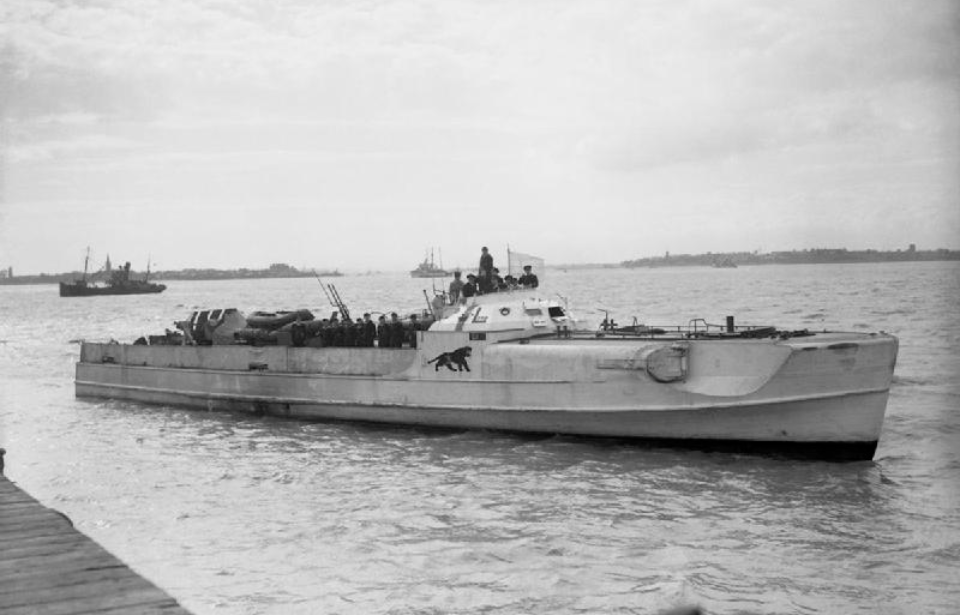
The Schnellboot – or S-Boot – was a German fast attack craft that served with the Kriegsmarine during the Second World War. It was referred to as the “E-boat” by the British, with the “E” standing for “enemy.” This became the designation used by all Allied nations. The vessel’s design evolved over the course of the conflict, with the S-100 class, the final evolution, being produced the most.
From yacht to E-boat
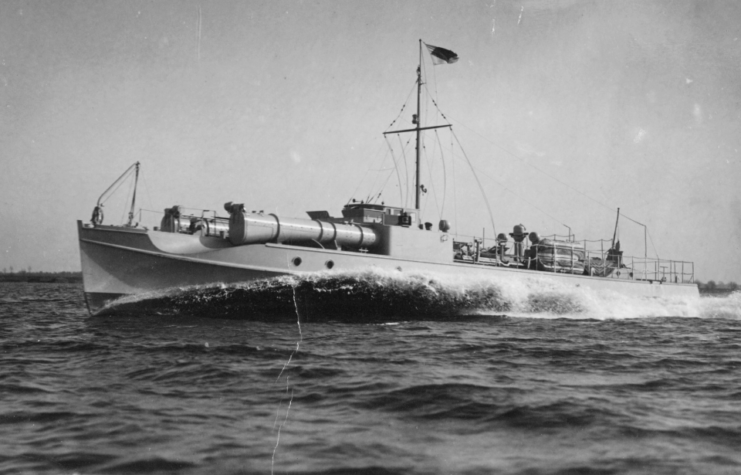
The E-boat was designed with a European war in mind. Expected to see action in the English Channel, North Sea and coastal regions, it needed to perform in rough waters. This led its design to feature a round-bottomed hull, instead of a typical flat-bottomed design. It also allowed the Germans to easily circumvent the Treaty of Versailles , which regulated large fighting ships.
The E-boat actually began life as the private yacht, Oheka II . Shipbuilding company Lürssen was contracted to produce a yacht for German-born American investment banker, Otto Hermann Kahn. The design caught the attention of the Reichsmarine , which ordered a fast attack craft with a similar design and the addition of two torpedo tubes. This became the S-1 .
Several variants were developed
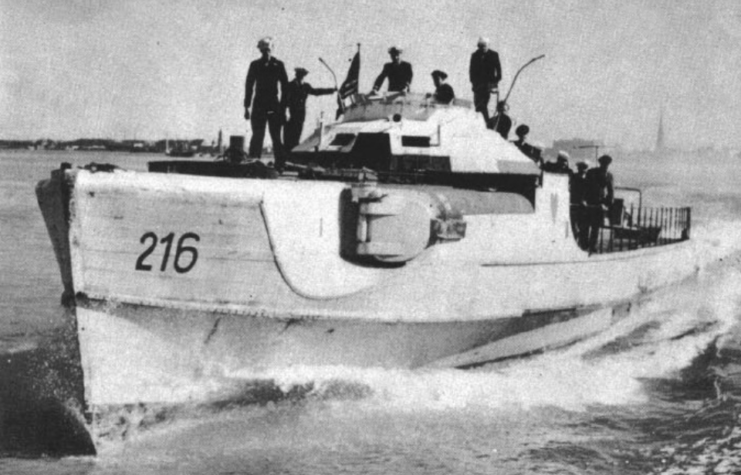
Tests were conducted with the S-1 , which resulted in various improvements made to the design. In 1931, the S-2 class became the first production model of the E-boat. These were also the first to experience combat when they were transferred to the Spanish Francoist Navy during the Spanish Civil War .
In 1933, the S-7 class was created, with seven boats produced, three of which were sold to China. The S-14 , with its longer hull, was developed the following year, followed by the S-18 in 1937. The S-26 was the first wartime model to be produced, and it entered service in 1940. This version of the E-boat featured a forward deck covering the two torpedo tubes.
The S-30 and S-38 classes followed, along with an armored type that boasted an armored bridge, as well as armament comprised of either 40 mm Bofors or 20 mm Flak anti-aircraft guns at the stern and an MG 34 Zwillingsockel at midships.
The S-100 was introduced in 1943 and was the most-produced E-boat of World War II , with 81 manufactured. The Type 700 was developed before the end of the conflict. It featured rear-facing torpedo tubes, in addition to forward facing ones, but retained the overall design of the S-100.
E-boat specs
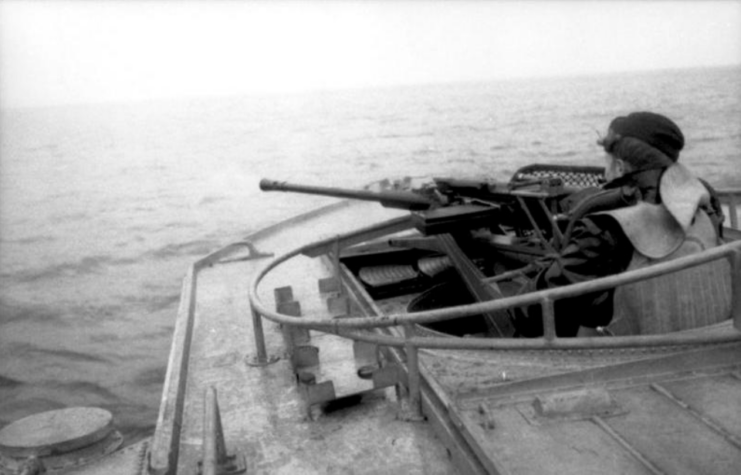
The E-boat’s hull was constructed of a metal frame and wood planks , which reduced weight for maximized speed. The S-100 class was 114.6 feet long, with a beam of 17.3 feet and a draught of 5.6 feet. The standard weight was 78.9 tons, with a maximum of 100 tons.
The E-boat design featured two small rudders on either side of the main. These could be angled outboard up to 30 degrees, which drew in an “air pocket slightly behind the three propellers, increasing their efficiency, reducing the stern wave and keeping the boat at a nearly horizontal attitude.” This was known as the Lürssen Effect. It ultimately lifted the stern of the vessel, allowing for greater speed while reducing the stern wave produced, making the E-boat harder to see.
The S-100 was powered by three Daimler Benz MB 501 marine diesel engines, which produced 3,960 brake horsepower . The E-boat had a range of 800 nautical miles at 30 knots and a maximum of 43.8 knots. It also carried a range of armament. Two 21-inch forward-facing torpedo tubes were located on either side of the bow, with four torpedoes stored onboard. It was also armed with three 20 mm C/30 cannons and one 37 mm Flak 42 cannon.
Operational history with the Kriegsmarine
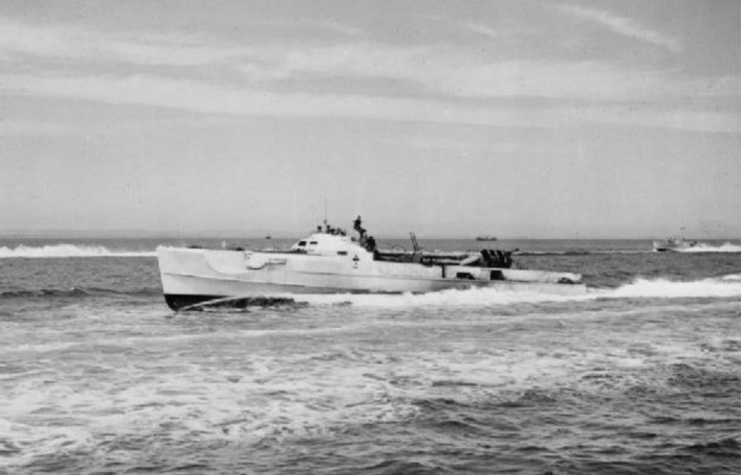
The Kriegsmarine primarily operated E-boats in the English Channel and Baltic Sea to disrupt shipping heading to southern and eastern ports. They were also deployed in smaller numbers to the Mediterranean and Black Sea – some were even used as boats aboard cruisers. E-boats deployed to the Black Sea were either transited there via river systems or dismantled and transited on land through Germany and Romania, being rebuilt upon arrival.
On April 28, 1944, E-boats with the 6th and 9th Flotillas attacked the Allied forces taking part in Exercise Tiger , one of the large-scale live-fire rehearsals for the upcoming invasion of Normandy . On D-Day itself, 31 vessels from the 9th Flotilla were the first to attack the Allied forces. At 5:00 AM, the E-boats departed Cherbourg, and, upon being confronted with the whole of the Allied fleet, fired all of their torpedoes.
E-boat accomplishments during World War II
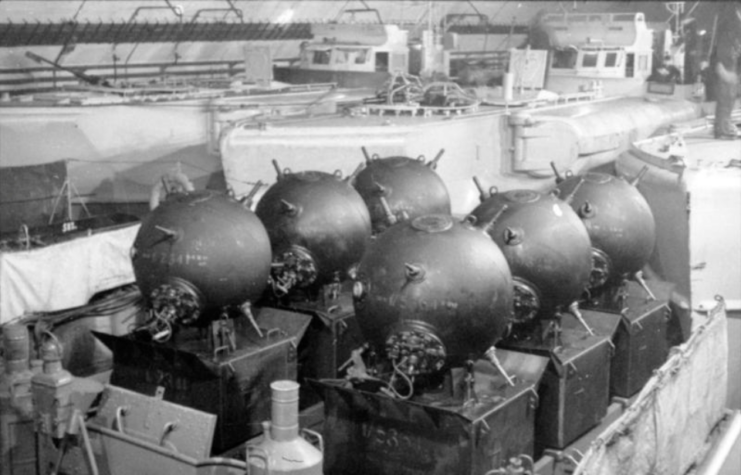
Over the course of the Second World War, E-boats reportedly sunk 12 destroyers, 11 minesweepers, eight landing ships, one submarine, six MTBs, one minelayer, one torpedo boat and various smaller vessels, including fishing boats. They were also responsible for sinking 101 Allied merchant ships, totaling 214,728 tons, and damaged various others, including two cruisers, five destroyers, three landing ships, one naval tugboat, one repair ship and several additional merchant ships.
Beyond direct action, sea mines laid by E-boats claimed 37 merchant vessels, a destroyer, two minesweepers and four landing ships. For their part in the war, 23 Knight’s Cross of the Iron Cross and 112 War Order of the German Cross in Gold were awarded to E-boat crewmen.
Das Schnellbootkriegsabzeichen – Fast Attack Craft War Badge
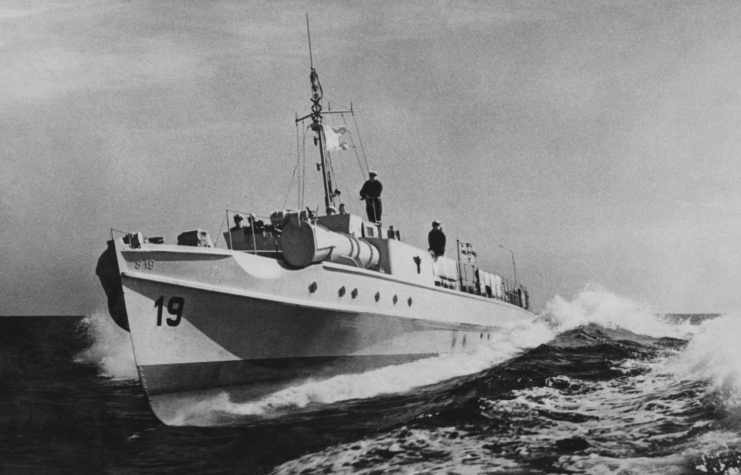
For exemplary service, crewmen serving aboard an E-boat could be awarded the Das Schnellbootkriegsabzeichen , meaning “Fast Attack Craft War Badge” or “S-Boot War Badge.” It featured a gold wreath, with the German eagle and Swastika at the top and an E-boat in the center, in silver.
More from us: Higgins Boat: The Landing Craft That Helped the Allies Win World War II
To be awarded the badge, one needed to have been involved in a distinctive mission, participated in 12 sorties against the enemy, showed good conduct and exemplary leadership, and either be wounded or killed in action (KIA).
Ultimately, the Fast Attack Craft War Badge was awarded when other decorations were unsuitable.
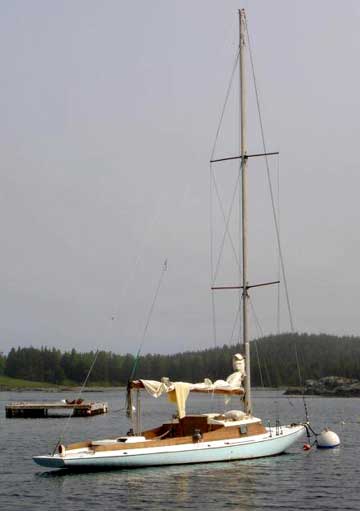



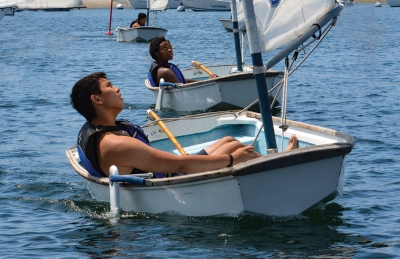
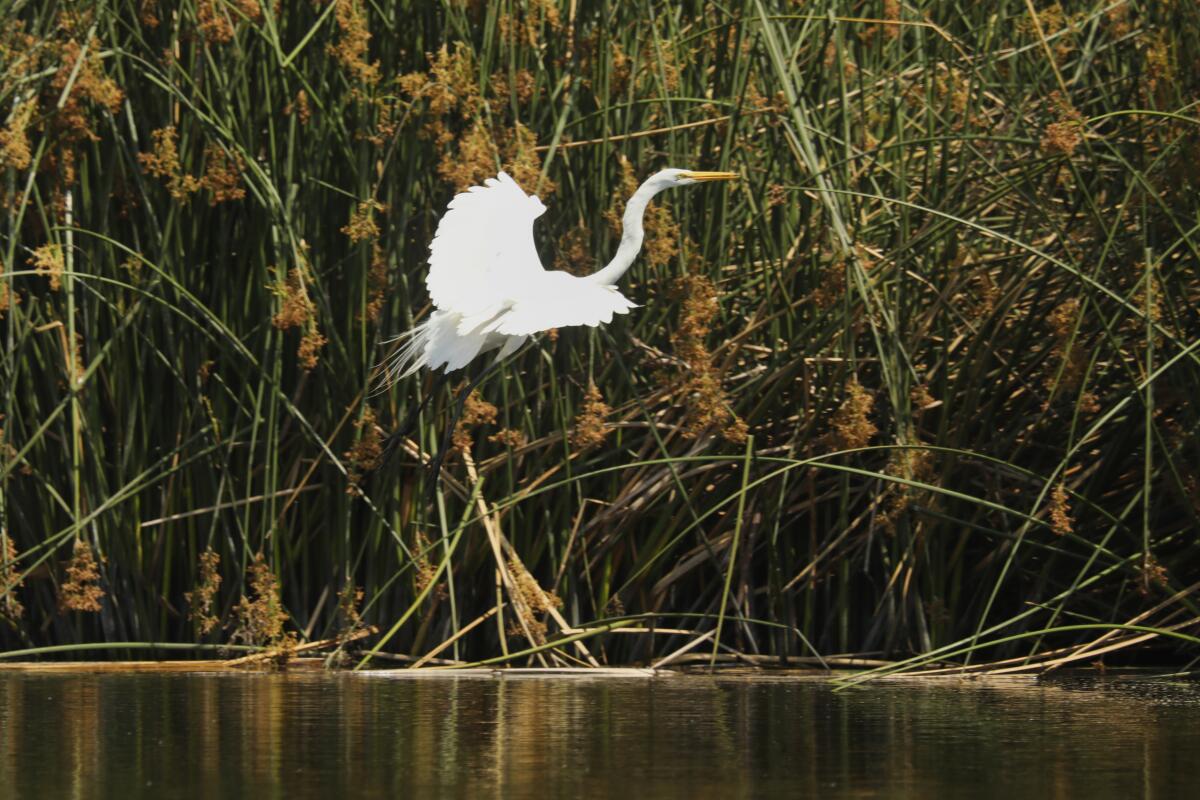




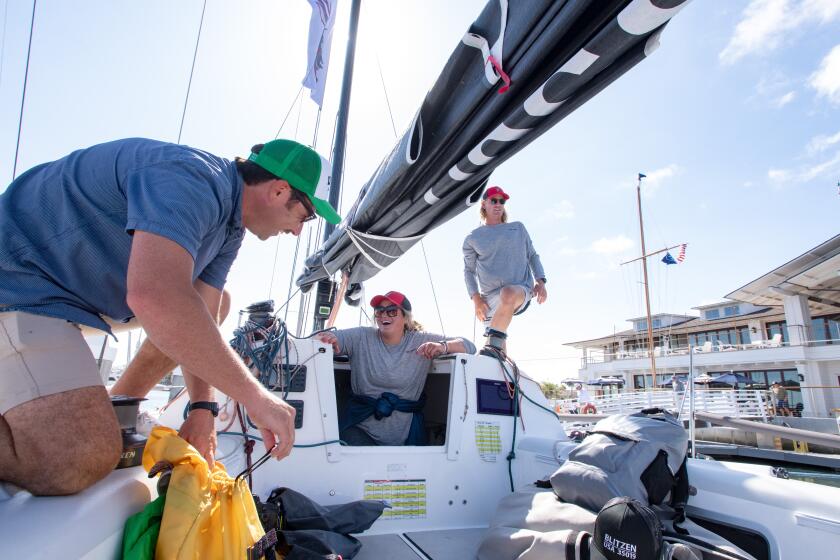
IMAGES
COMMENTS
THE MELGES E SCOW. The elegant and sleek Melges E Scow is the pinnacle of high speed one-design racing for sailors in North America, from lakes and bays to protected ocean harbors. With over 70 boats regularly hitting the starting line at the National Championship, the Melges E Scow is an ever-growing fleet driven by a design that's always ...
National Class E Scow AssociationThe National Class E Scow Association (NCESA) was founded in 1959 to promote the sport of E Scow Racing. It exists to serve all regions of the country where E Scow Sailing is pursued. There are three types of membership in the NCESA: Boat Owner - Regular - Associate The NCESA is supported through membership dues ...
E Scow. The E Scow is a recreational sailboat, originally built of wood and now predominantly of fiberglass sandwich construction, with wood trim. It has a fractional sloop rig with either wooden or aluminum spars and running backstays.The forestay is attached well aft of the boat's bow. The hull is a scow design, with a vertical transom, a spade-type rudder controlled by a tiller and ...
The National Class E-Scow Association (NCESA) was founded in 1959 to promote the sport of E-Scow sailing. enforce scantling rules and specifications for the control of the design of Class E Scows. We have fleets primarily in the Midwest and East coast along with a few in the south and west.
The National Class E Scow Association manages the class and the National Championship regatta. Membership is across North America and include both active members and associates. In 2023, the E Scow celebrated its 100th birthday. There were multiple celebrations across the country, culminating in the National Championship regatta in Madison, WI ...
Officially launched in 1924, the 28-foot E Scow was an answer to the much harder to manage 38-foot A Scows that began sailing in Minnesota in 1900, and the single-sail, 20-foot C Scow that was usually used for training. Typically sailed with a crew of three or four, the boat's sail plan has changed over time, but today it is sloop-rigged with ...
E Scow (National Class E Scow Association) Download Boat Record: Notes. Main: 228 sq.ft. Jib: 95 sq.ft. Spinnaker: 550 sq.ft. Sailboat Forum. ... A Ballast/Displacement ratio of 40 or more translates into a stiffer, more powerful boat that will be better able to stand up to the wind. Bal./Disp = ballast (lbs)/ displacement (lbs)*100
National Class E Scow Association, Fontana, Wisconsin. 1,888 likes · 98 talking about this · 18 were here. National E Scow Class Association
The ever-growing fleet of Melges E Scows boasts both impressive world-class competition and accessible family fun for everyone. For more than 80 years, the E Scow has founded the tradition of fun and fast sailboat racing all over North America, from lakes and bays to protected ocean harbors. More than 50+ boats can be seen on the starting line.
Electric boats, E Class Boats, Dinghy, Small boat, E Class electric boats
The Triple E class is a family of very large container ships with a capacity of more than 18,000 TEUs, which are owned and operated by Maersk Line.. With a length of 399.2 m (1,309 ft 9 in), when they were built they were the largest container ships in the world, but were subsequently surpassed by larger ones such as CSCL Globe. [2] [3]In February and June 2011, Maersk Line awarded Daewoo ...
The design of the E-boat was continuously improved upon throughout the war. Later models were larger, faster, and better armed. The culmination of these improvements was the S-100 class, which entered service in 1943 and remained in service through the end of the war.
E-boat was the Western Allies' designation for the fast attack craft (German: Schnellboot, or S-Boot, ... Another class of even smaller fast attack boat, not intended to operate independently, but to be based on auxiliary cruisers or other vessels operating in overseas areas. They measured 12.50 x 3.46 x 1.02 m (41 ft x 11 ft 4in x 3 ft 4in).
E-Boat (German: Schnellboot, or S-Boot, meaning "fast boat") 1944—1945 Part I. One of the long-standing complaints among the E-boat crews was that although their craft were faster than most of the British, they suffered from being less heavily armed. This was certainly true as far as the new D-type MGBs were concerned, armed as they were ...
Notes. This from designer Julian Everitt: "E Boat was originally designed as an offshore one design and predates the mini ton, but happens to be the right size as it was conceived to be the smallest that would measure under the IOR rule." (Plans are still available through class web site.) Original Builder: Evolution Yachts Ltd. Other builders:
one mast. triangular mainsail (called a Bermuda sail) a foresail (also called the jib) fore-and-aft rigged. medium-sized (12 - 50 ft) Fore-and-aft rigged just means "from front to back". This type of rigging helps to sail upwind. Any sailboat with one mast and two sails could still be a sloop.
In 1933, the S-7 class was created, with seven boats produced, three of which were sold to China.The S-14, with its longer hull, was developed the following year, followed by the S-18 in 1937. The S-26 was the first wartime model to be produced, and it entered service in 1940. This version of the E-boat featured a forward deck covering the two torpedo tubes.
Marblehead 36 E class, 1924, Camden, Maine. 3/8/07, Marblehead 36 E class, 1924, Camden, Maine, $5,000, ad expired: ... Texas Lakes: Advertise with us: Contact: Free Sailboat Ad: Go to Sailing Texas classifieds for current sailboats for sale . 1924 Marblehead 36 E class one design Mahogany planked over oak frames. Fiberglassed in the 1960's ...
Learn to Sail. Your dream to learn to sail is close to becoming reality. Find a school, take a course and set off on your new adventure. ASA has everything you need to sail confidently and safely and you can start right now. We have compiled a list of tools and resources that will help you learn the basics of sailing before you get out on the ...
This 14-foot sailboat is an Olympic-class sailboat that is highly-responsive and challenges sailors to develop their technical skills. This boat is ideal for 1 adult. This equipment requires qualification. Rates. Fee SDSU/UCSD Current Student; 2.5 hour rental: $45: $32:
The small boat sailing program includes Basic Sailing, Advanced Sailing, and Hobie Cat Sailing. After completing a small boat sailing class, you can become eligible to rent that sailboat through our rental or sailing membership programs. The keelboat sailing program includes Basic Keelboat Sailing Level 1 and Basic Keelboat Sailing Level 2.
The E-class submarines were a class of two United States Navy submarines, built by the Fore River Shipbuilding Company of Quincy, Massachusetts, under a subcontract from the Electric Boat Company. They were used as coastal and harbor defense submarines prior to World War I.When hostilities broke out, the E class were mostly used as training boats; however, E-1 operated on war patrols based in ...
Monterey Boat Dives; Monterey Conditions; Trips. Monterey Boat Dives; Channel Islands July 4-7, 2024 & October 17-20, 2024; Tubbataha Aggressor Philippines; Beqa Lagoon Resort Fiji; About. History; Contact Us; Our Indoor Pool; Our Employees; Diver Dan's Low Price Guarantee; Make Up Fees; My account; Channel Islands July 4-7, 2024 & October 17 ...
State officials awarded a $600,000 grant on Thursday to develop plans for the future preservation of Frank and Joan Randall Preserve. The 387-acre space just east of the Santa Ana River and north ...